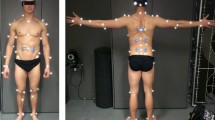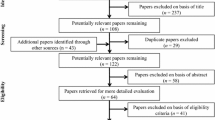Abstract.
In order to utilize static posturography as a tool with which to diagnose pathological balance disorders, it is necessary to understand the contribution of psychological factors such as fear of falling. In this study we examined kinetic and kinematic parameters during quiet stance of eight young healthy adults standing under three conditions which posed increasing levels of postural threat. Participants were required to stand quietly, both with and without visual information and with normal or reduced vestibular information for 2-min periods at each of three surface conditions: ground level (low threat), 81 cm above the ground completely surrounded by a support surface (medium threat) and 81 cm above ground at the edge of the surface (high threat). In addition to calculating displacement and frequency measures for movements of centre of pressure (COP) and centre of mass (COM), a measure of stiffness was derived from the difference between COP-COM signal. Mean EMG activity was recorded bilaterally from anterior and posterior muscles of the lower and upper leg. A stiffening strategy was adopted when individuals stood under high threat conditions involving significant changes in kinematic, kinetic and EMG variables. The A-P stiffness constant increased significantly (27.5%) for the high threat compared to low threat condition, independent of vision or vestibular information. Changes in stiffness were accompanied by: (1) backward shift of the mean A-P position of COP and COM, (2) increased mean power frequency and decreased amplitude displacement of the COP and (3) decreased amplitude displacements of the COM. Of the significant changes observed in mean EMG activity with increased postural threat, only tibialis anterior was significantly correlated with increased stiffness, while activity in soleus, medial gastrocnemius and rectus femoris was highly correlated with mean position of COP.
Similar content being viewed by others
Author information
Authors and Affiliations
Additional information
Electronic Publication
Rights and permissions
About this article
Cite this article
Carpenter, M.G., Frank, J.S., Silcher, C.P. et al. The influence of postural threat on the control of upright stance. Exp Brain Res 138, 210–218 (2001). https://doi.org/10.1007/s002210100681
Received:
Accepted:
Issue Date:
DOI: https://doi.org/10.1007/s002210100681




